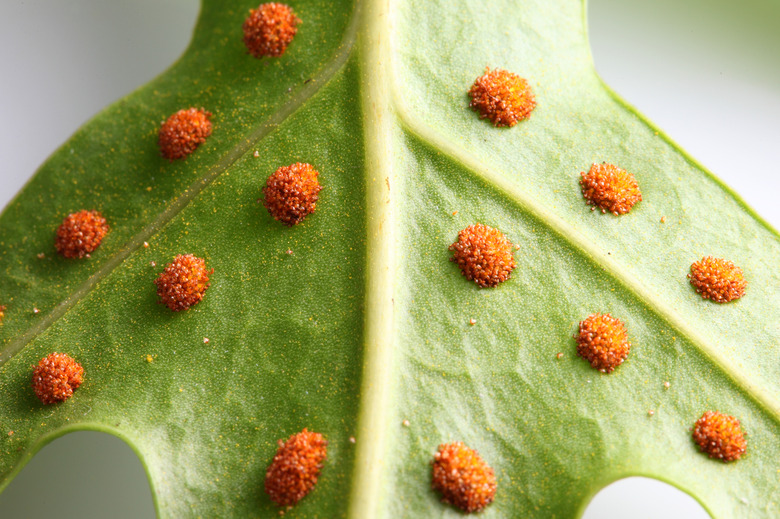The Difference Between Seeds And Spores
How is a seed different from a spore? While both spores and seeds are reproductive structures of plants, there are several distinctions between spores and seeds. There is an alternation of generations in all plants, but seed-bearing plants and spore-bearing plants accomplish this differently.
In spore-bearing plants like ferns, the diploid part of the life cycle is the sporophyte, and spores are the haploid part of the life cycle. Plants that make seeds also alternate generations, but their gametophytes are smaller and cannot live independently from their sporophytes.
Spores vs. Seeds
Spores vs. Seeds
One main difference between spores and seeds is that spores are single cells, while seeds are multicellular. Another way of saying this is spores are haploid, and seeds are diploid.
Haploid, which is sometimes referred to as 1n, means that the organism has only one set of chromosomes. Diploid, or 2n, means that an organism has two sets of chromosomes, one set from each parent.
The life cycle of both seed-bearing and spore-bearing plants includes sporophyte and gametophyte generations. In plants that make spores, like ferns, the leaf-like structures called fronds are the diploid sporophytes, notes Penn State University.
Sporophytes are the most prominent structures in spore-bearing plants, but the tiny, haploid gametophytes are responsible for sexual reproduction. Gametophytes of spore-producing plants live independently from sporophytes and develop female and male reproductive structures. Once fertilization occurs in spore-bearing plants, the zygote becomes a sporophyte, which grows out of the gametophyte.
Alternation of Generations
Alternation of Generations
In plants that make seeds, gametophytes are dependent on sporophytes, notes Mt. San Antonio College. The sporophyte of seed-bearing plants is made up of the plant's leaves, stems and flowers, and the gametophyte is formed within the sporophyte in seed-bearing plants.
According to Biology(OpenStax'>Biology LibreTexts/5%3A_Biological_Diversity/26%3A_Seed_Plants/26.1%3A_Evolution_of_Seed_Plants), seed-producing plants are heterosporous, meaning that they have both male and female gametophytes. In contrast, spore-producing plants have only one type of gametophyte, so they are referred to as homosporous. Haploid spores are the gametophytes of plants like ferns, while the gametophytes of seed plants are called megaspores (female) and microspores (male). Pollen grains contain microspores, and megaspores are contained within plant ovules.
Pollination – the transfer of pollen to the female flower parts – must occur in seed plants in order for the ovule to become a seed. Fertilization is the word for the fusion of the female gamete with the male gamete, and the result of this fusion is a plant zygote, the first diploid cell of the plant seed, which becomes the plant embryo.
Advantage of Seeds
Advantage of Seeds
In multicellular seeds, the plant embryo is bundled with food inside the seed coat. Because spores are unicellular, they do not come packaged with food to help the plant begin to grow. This nourishment inside of a seed is called the endosperm, and it supplies protein and nutrients essential for a plant embryo to germinate and get established.
Another difference between spores and seeds is that seeds are usually larger than spores. Being multicellular and packaged with nutrients, seeds can be much larger than spores – the seeds of some palm trees weigh up to 40 pounds. Seeds can stay dormant for many years, waiting for the perfect conditions to germinate.
While spore-producing plants require water for sexual reproduction, the pollen of seed-producing plants like wheat and cucumbers can be transferred to the female parts of the plant by wind or insects. This is an evolutionary advantage for seed plants, allowing them to live on land and survive unfavorable and dry conditions.
By protecting their embryos and endosperms with a coat, seeds can survive droughts. And because they are larger and more complex, seeds often have shapes or structures that allow them to travel far away from their parent plants, which lets them reach new places and establish themselves where there is less competition for resources.
Cite This Article
MLA
Sloane, Christina. "The Difference Between Seeds And Spores" sciencing.com, https://www.sciencing.com/the-difference-between-seeds-and-spores-12523322/. 30 September 2021.
APA
Sloane, Christina. (2021, September 30). The Difference Between Seeds And Spores. sciencing.com. Retrieved from https://www.sciencing.com/the-difference-between-seeds-and-spores-12523322/
Chicago
Sloane, Christina. The Difference Between Seeds And Spores last modified March 24, 2022. https://www.sciencing.com/the-difference-between-seeds-and-spores-12523322/
